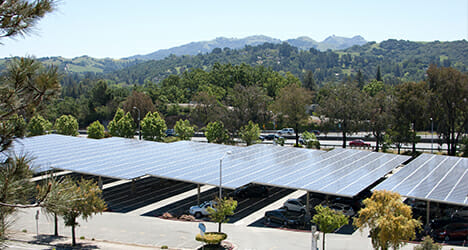Constructing Data Centers that Power Artificial Intelligence (AI) Learn More
Renewable Energy Sources for a Sustainable Future

Renewable energy is rapidly emerging as a cornerstone of sustainable development, offering a diverse array of clean and abundant resources to power our planet. Let’s delve into the different sources of renewable energy and explore how they transform our energy landscape.
Exploring Renewable Energy Sources
Solar Power
Solar energy is perhaps the most well-known form of renewable energy, harnessing the power of the sun to generate electricity. The Solar radiation, emitted by the sun, is captured by solar technologies like photovoltaics (PV) and concentrating solar-thermal power (CSP) to generate energy. PV cells in solar panels absorb sunlight, creating electrical charges that produce electricity when the sun shines on them. This technology has widespread adoption in residential and commercial settings, with installations ranging from rooftop solar arrays to large-scale solar farms.
Some examples of solar power projects include the Lafayette BART station (photo), which comprises photovoltaic panels on canopies covering approximately 200 parking spaces and producing a combined 1 megawatt of electricity. Another example is the rooftop solar installation at Graton Casino in Rohnert Park, featuring a 2.125 MW solar system with 4,722 450-Watt modules.

Wind Energy
Wind turbines harness the wind’s kinetic energy to generate electricity. As the wind passes through the turbine blades, it causes them to rotate, driving a generator to produce electricity. Wind turbines typically feature three blades on a tubular steel tower, though variations exist with two blades or different tower materials like concrete or steel lattice. Positioned at least 100 feet above the ground, the turbine’s blades capture wind energy through lift, with a nacelle atop the tower housing key components like gears, rotor, and generator, while a controller and brake system ensure safe operation in varying wind conditions. Wind energy has become increasingly cost-effective and efficient.
When considering wind power, large wind farms often come to mind. However, private companies, such as Scheid Family Wines, are integrating wind into their sustainability initiatives. BEI Construction assisted in installing a 1.85-megawatt turbine system (photo), allowing the winery to utilize wind energy to power its operations. In another significant wind energy project, BEI completed electrical and civil construction for a 3 MW wind project comprising two turbines at Dole Fresh Food’s facility in Soledad, California.

Diverse Sources and Grid Resilience Strategies
Hydropower, biomass, geothermal energy, and hydrogen are other crucial pillars of sustainable energy generation. Hydropower, achieved through damming rivers or utilizing natural water flow, converts the energy of moving water into electricity, offering a dependable renewable energy source. Biomass, derived from organic materials like wood and agricultural waste, presents a versatile option for producing heat, electricity, or biofuels, thereby addressing both energy needs and waste management concerns. Geothermal energy taps into the Earth’s heat reservoirs, providing a consistent and environmentally friendly source of power for electricity generation and building heating/cooling systems. Hydrogen, emerging as a clean energy carrier, offers the potential to revolutionize various sectors, including transportation and power generation, by providing a scalable and flexible solution to integrate renewable energy into existing infrastructure.
Battery Energy Storage Systems
These renewable energy sources are further enhanced by their ability to be stored in Battery Energy Storage Systems (BESS). BESS technology plays a crucial role in grid resilience by storing excess energy generated during peak production periods and releasing it during high demand or low production periods, thus stabilizing the grid and enhancing its reliability. This storage capability mitigates the intermittency of energy sources, ensuring a consistent and reliable power supply even when weather conditions are unfavorable for energy production.
As our energy infrastructure evolves towards greater reliance on renewables, the importance of energy storage in bolstering grid resilience and ensuring a sustainable energy future becomes increasingly evident.
BEI Construction has undertaken several notable projects involving BESS, such as the recently completed work on the 68.8 MW/ 275.2 MWh Stanton Battery Energy Storage System. In partnership with EPC contractor and system integrator, Energy Vault, and developers Wellhead and W Power, this is one of the largest energy storage systems in Southern California. It provides clean power and improved grid resiliency in Southern California Edison’s southwest LA region.
Additionally, BEI Construction has implemented BESS solutions for commercial and industrial clients. These projects demonstrate BEI’s expertise in integrating energy storage technologies to optimize energy usage and ensure uninterrupted power supply, even in challenging conditions.
